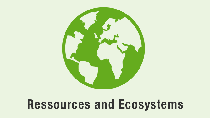Sustainability
BASF experts publish research paper on Life cycle impact assessment of microplastics as one component of marine plastic debris
August 31, 2020
BASF experts from Corporate Sustainability and Industry Affairs together with external researchers have now developed a scientific model that shows how to integrate the impact of microplastics on the marine environment into impact assessments within life cycle assessments of plastics products.

The Medellin declaration on Marine Litter in Life cycle assessment and Management by the Forum for Sustainability through Life Cycle Innovation (FSLCI, June 2017) was one of the starting points of the scientific work. It highlighted that our oceans are a big source of e.g. food and rainwater, that they facilitate the transport of goods and serve for touristic purposes. Oceans support the ecosystem services and contribute to the socio-economic environment. As a consequence, plastics in the oceans negatively affect not only the marine life and ecosystems overall, they also cause negative impacts on human health for example through the consumption of plastic fragments in seafood. Minimizing these impacts is crucial and we need to promote a circular economy approach and aim towards more sustainable consumption patterns and lifestyle choices to decrease the dissipation of plastics.
Life cycle management has the potential to accelerate changes associated with design, manufacture, use and end of life management of plastics. This approach linked with the application of Life cycle assessments will prevent or significantly reduce marine pollution of all kinds of materials and contribute to a positive socio-economic development. However, currently life cycle assessment (LCA), as one of the most widely used environmental sustainability assessment tools, is not yet adequately addressing the impacts generated due to marine debris, plastics and microplastics. As a consequence, there is still an overall need to assess marine ecological impacts in life cycle assessment in a meaningful way.
Prerequisite for an impact assessment is the quantification of impacts. From the physical and chemical impacts discussed in the relevant literature, the researchers identified factors which are both quantifiable and show clear evidence of a significant impact on marine life. The study takes an exo-toxicological approach, focusing on microplastics particles of 100 μm as an average for other sizes observed in the marine environment. The authors quote scientific findings that “…microplastics exposure triggers a wide variety of toxic effects as feeding disruption, disturbances of reproduction, disturbances in energy metabolism, changes in liver physiology, and synergistic or antagonistic action with other hydrophobic organic contaminants.”
The impact of microplastics is measured with the concentration of particles which depends, among others, on their fragmentation, degradation and on the time they persist in the environment and affect marine life. In a calculation experiment based on specific kinetics of polymers, the researchers evaluated different polymer types, forms, and sizes of particles separately or in a mixture to detect how their ingestion impacts on two types of zooplankton differ from one another. They found a cause-effect chain between toxic effects of the microparticles to different species in water which can be used in an LCA assessment. Going further, they developed first models to calculate the number of particles in the environment over time, which means a period of 100 to 500 years. These figures need to be considered in the LCA assessment. The model was then applied to a test case: a hypothetical comparison between the impacts of Low-density polyethylene (LDPE) and Polypropylene (PP) fabric. Based on the model simulations, they developed the hypothesis that products with slower fragmentation and faster degradation of plastic litter can have lower environmental impacts.
“Although there are numerous gaps in the current research on microplastics in the marine environment which we had to fill with assumptions and modelling, I am confident that our model supports meaningful LCA methodology. We can now consider microplastic materials in the decision-making process for more sustainable products, for example packaging,” explains Peter Saling, one of the authors.

Related Links
- You can find the full paper online: “Life cycle impact assessment of microplastics as one component of marine plastic debris” by Peter Saling, Lora Gyuzeleva, Klaus Wittstock, Victoria Wessolowski and Rainer Griesshammer, in: The International Journal of Life Cycle Assessment, Springer (DOI 10.1007/s11367-020-01802-z).